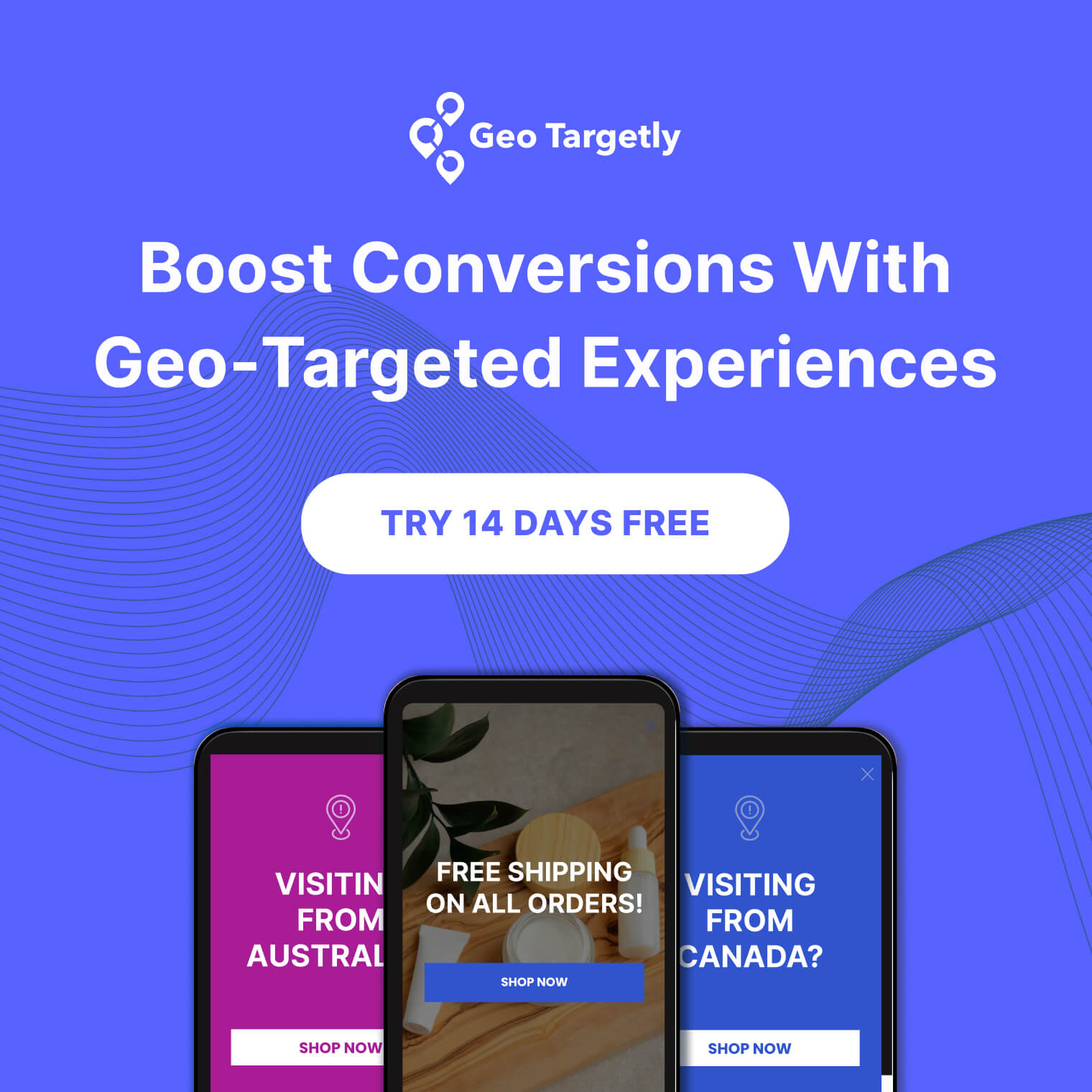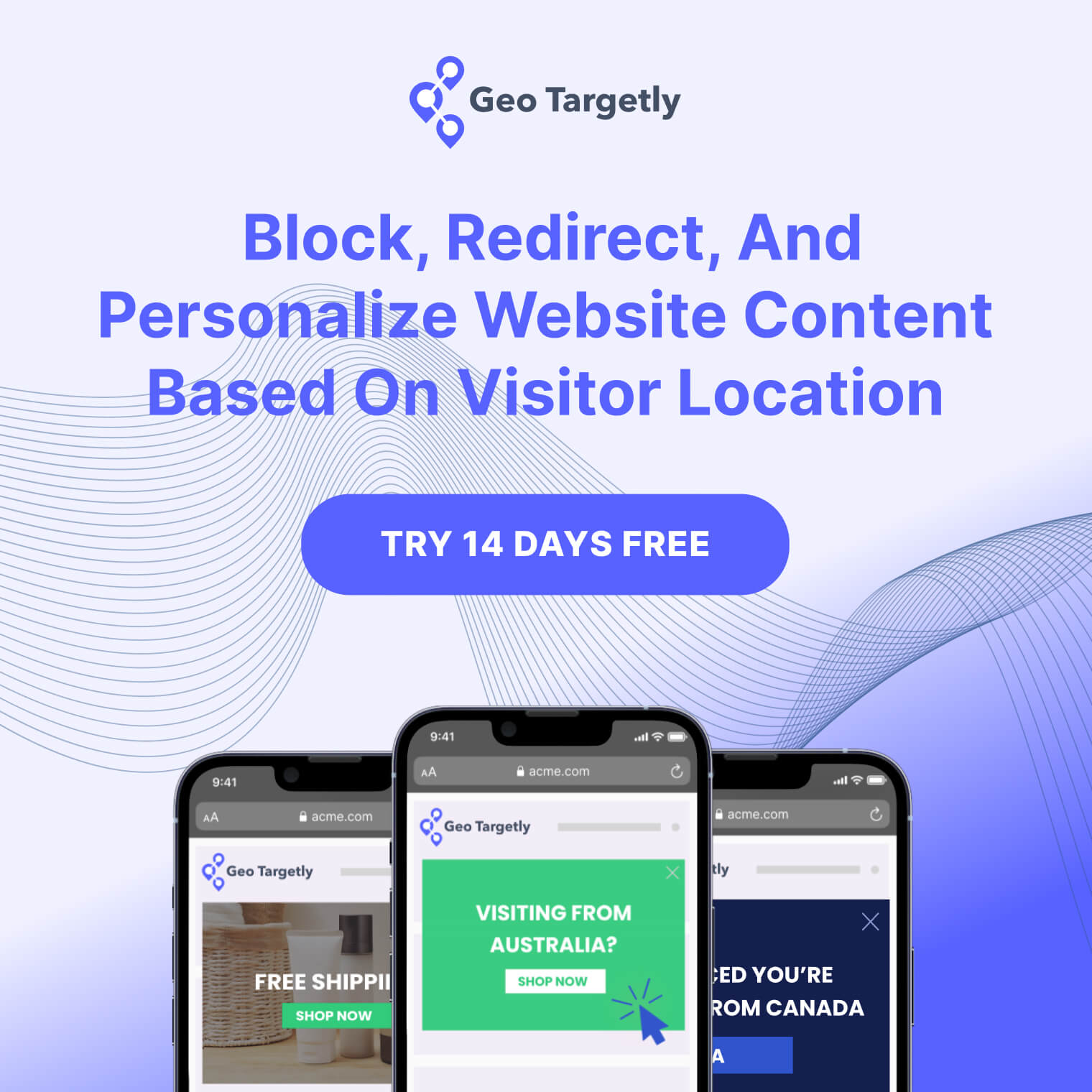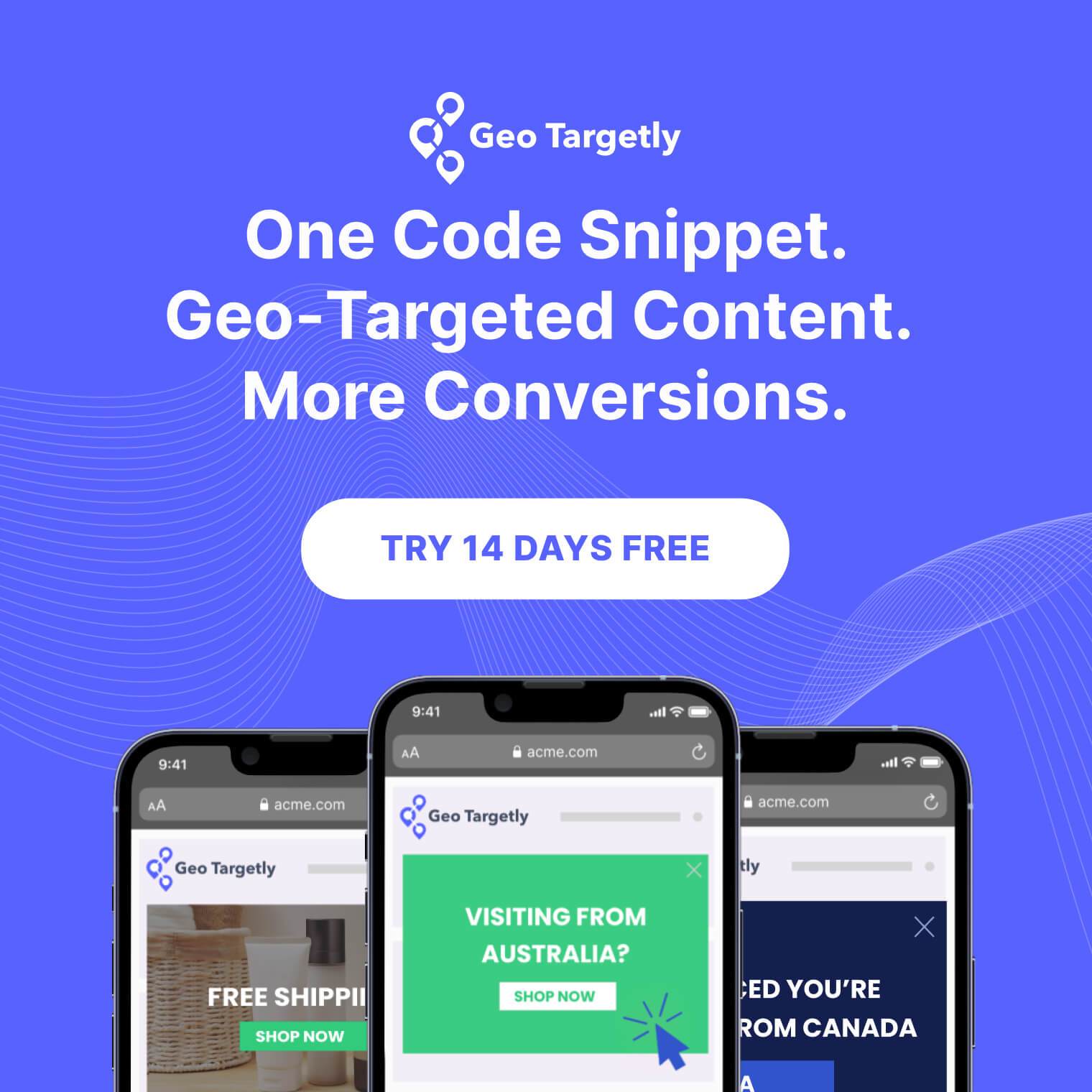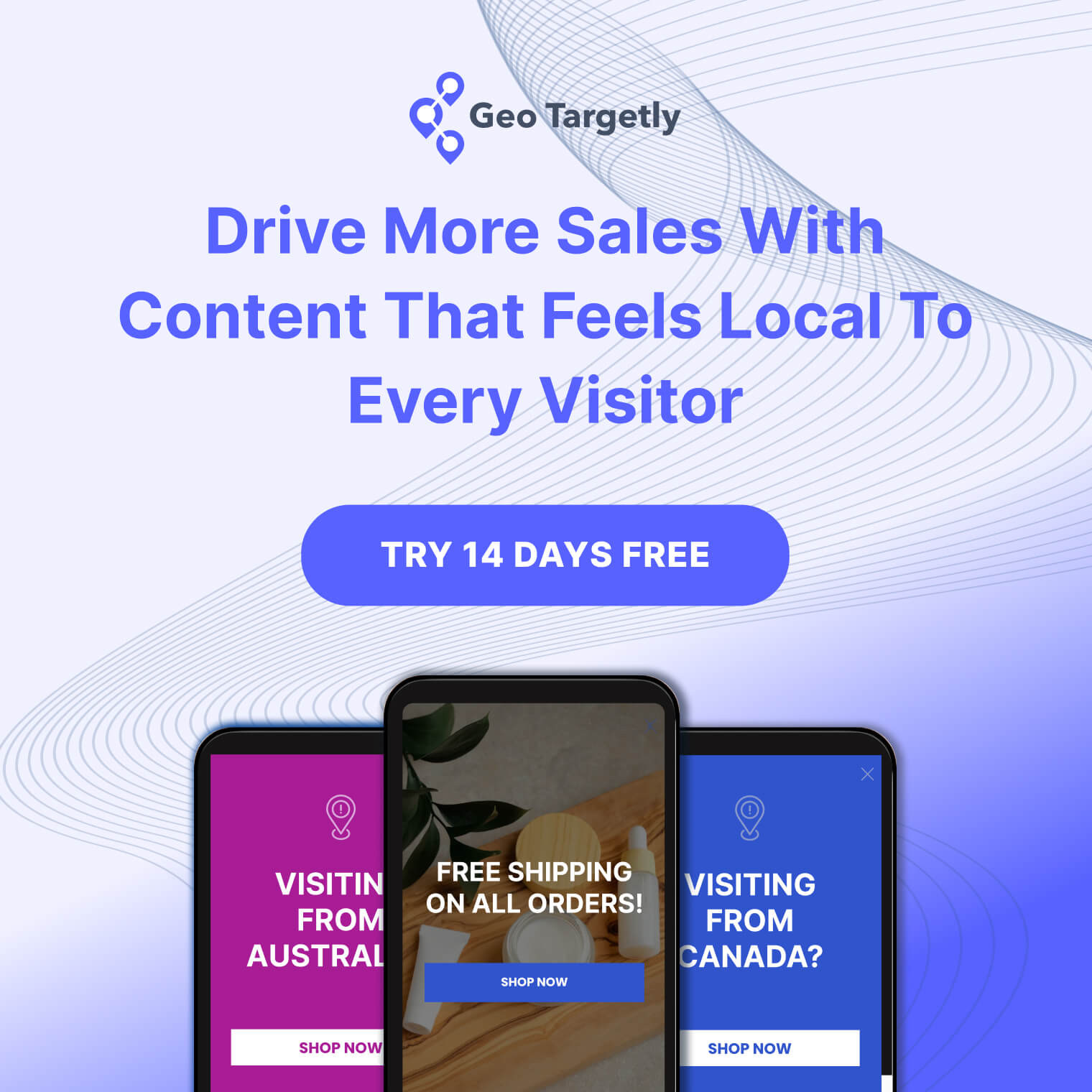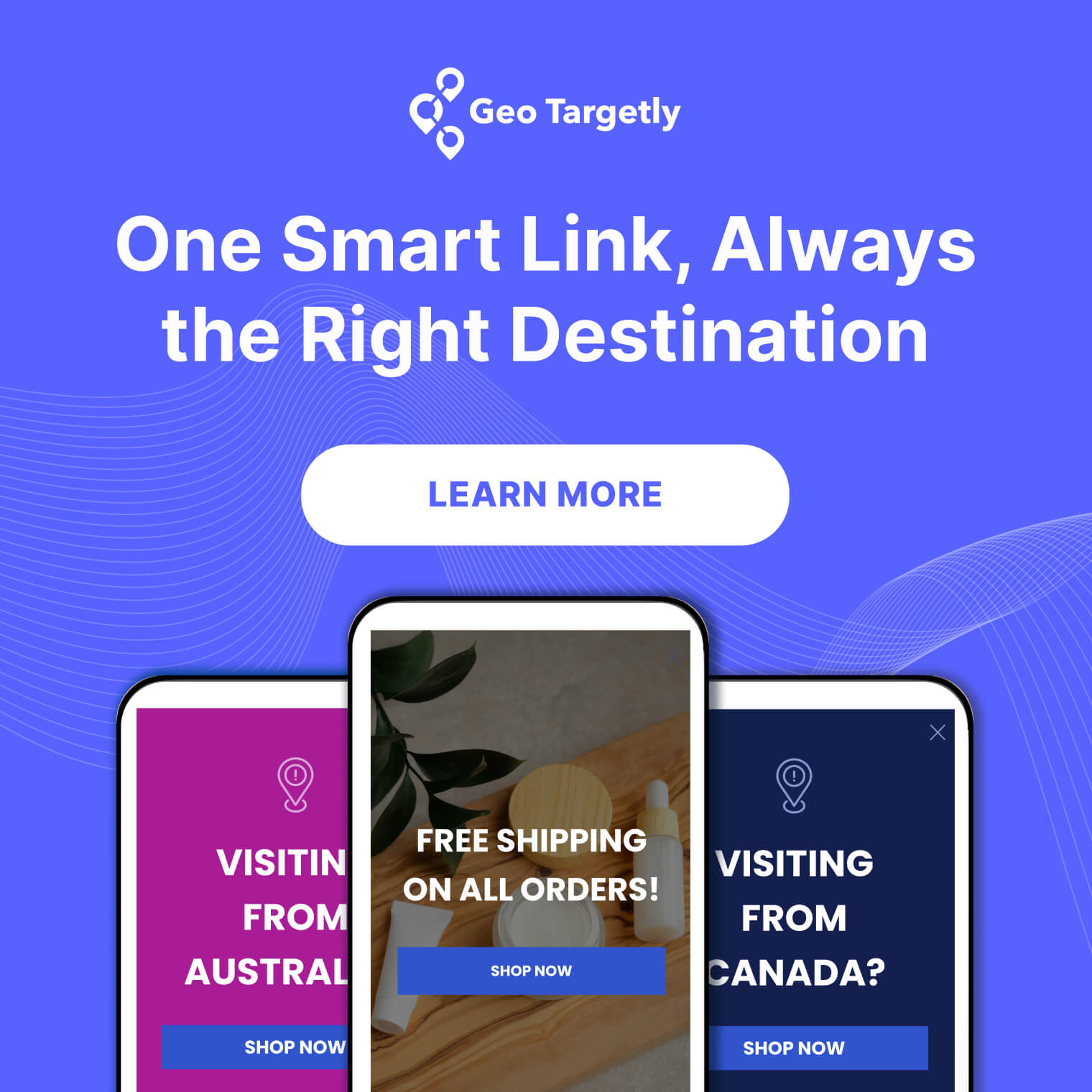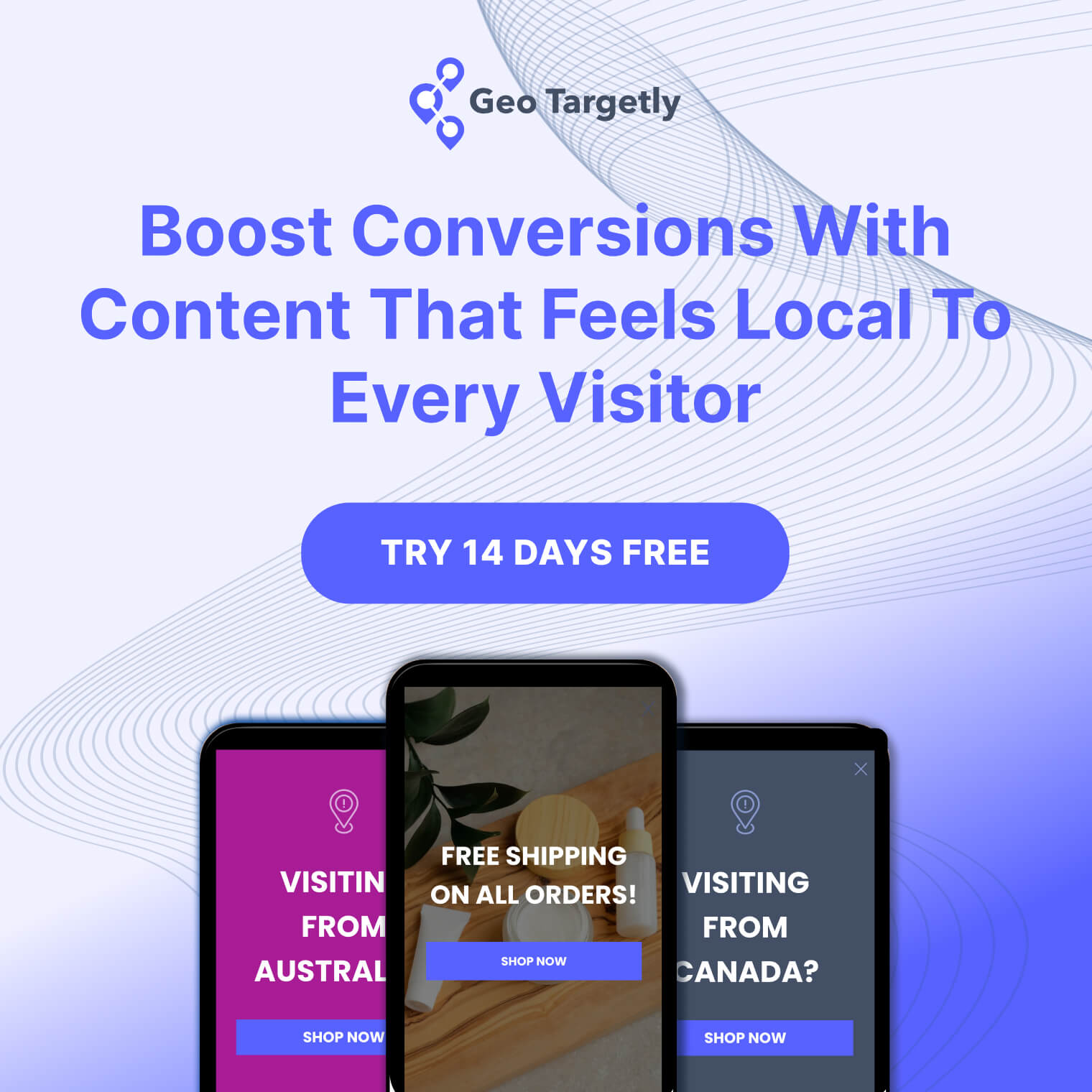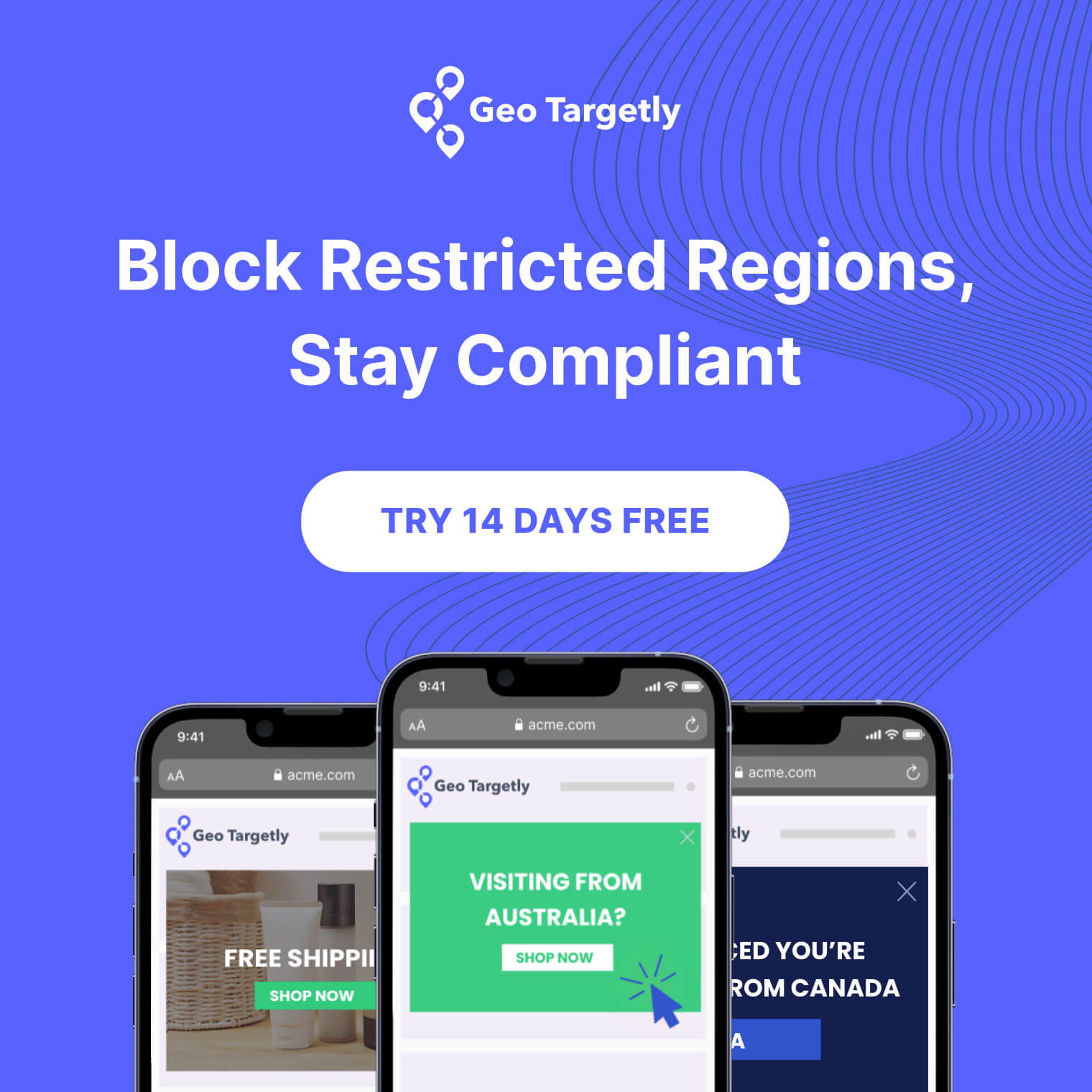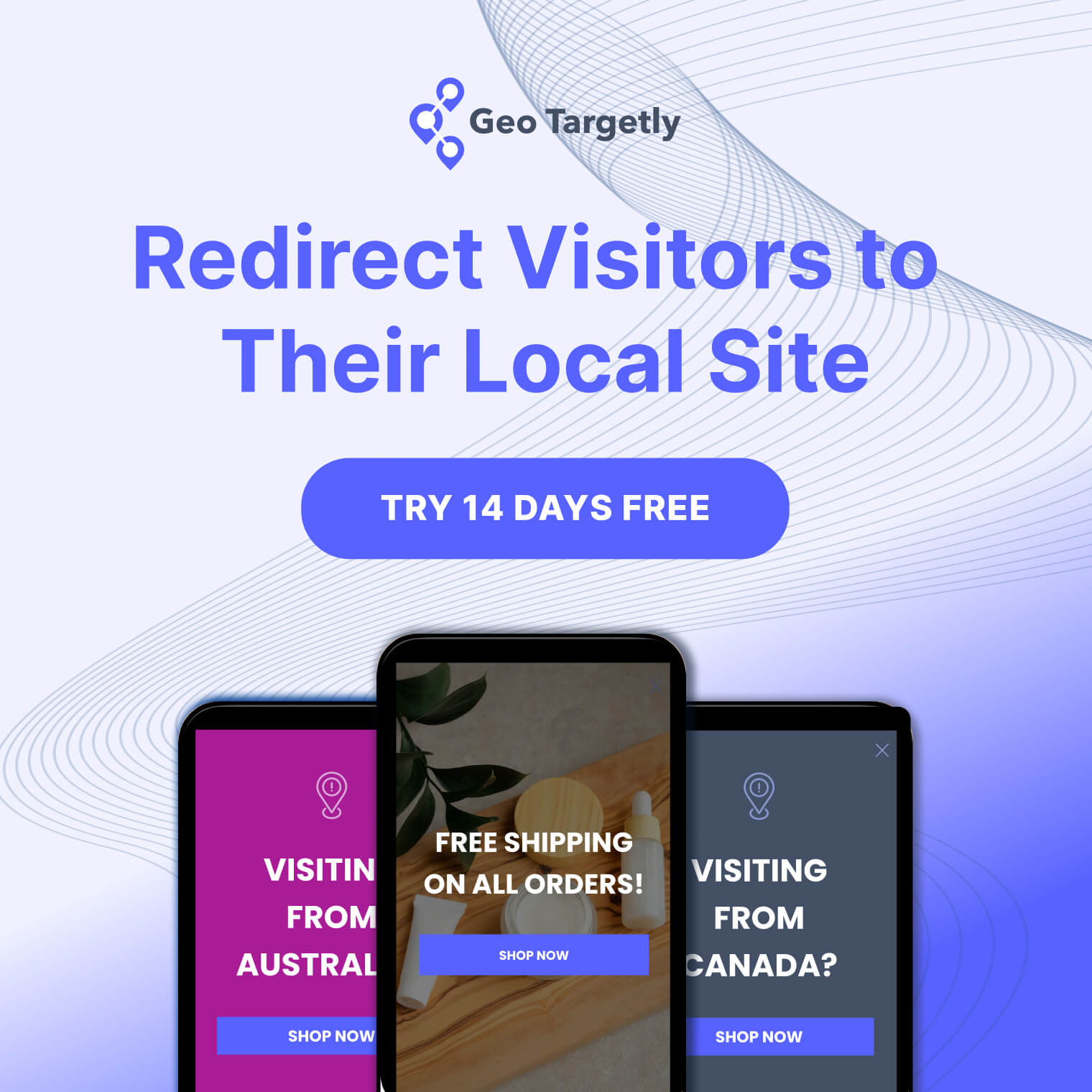

Geotargeting is a game-changer in marketing, allowing businesses to reach highly specific audiences based on their geographic location.
In an over-crowded digital world where personalized messaging is more likely to grab attention, geotargeting tools give marketers the power to customize campaigns for maximum relevance and impact.
Whether you're a local business targeting nearby customers, or a multinational corporation seeking to spread specialized messages in different regions, geotargeting tools can give you a major boost in marketing effectiveness.
We’ve compiled a list of 10 amazing tools you’ll want to start using today, along with their best features, pricing, and pros and cons. Here’s a brief overview of what we’ll be covering in this complete guide.
.png)
How to use geotargeting in marketing
Before we get started, you may be wondering how exactly geotargeting is used in marketing, and what the benefits might be. Here are several effective ways to use geotargeting in your marketing campaigns:
1. Localized advertising
Geotargeting lets you create ads that are relevant to specific regions. For example, you can show ads for winter clothing in colder areas and beachwear in warmer locations, making your campaigns more appealing to local customers. Multiple reputable companies and enterprises use localized innovative ad tech approaches implementing an ad server, demand-side platform, native advertising to make their campaigns as effective as possible.
2. Personalized content
You can customize content based on the user's location to make their experience more eye-grabbing and relevant.
This could mean displaying different website banners, blog posts, or email content tailored to regional interests, weather conditions, or events. If you want to quickly write content, you may use AI tools such as Paragraph writer AI, Chatgpt, and Claude AI to help you write text that fits the user's location. While AI-generated content can boost personalization, ensuring its originality is just as important. Copyleaks, a powerful AI-driven plagiarism detection tool, helps verify content authenticity by identifying AI-generated text and potential duplication. Cybernews has a detailed Copyleaks AI review, exploring how it can help maintain content integrity while leveraging AI for personalization. This makes your content more appealing and connected to people from different areas.
3. Geo-fencing for notifications
Geo-fencing involves setting virtual boundaries around specific locations. When a customer enters or leaves these areas, it triggers location-based notifications or offers.
This is quite useful for businesses with brick and mortar locations, such as retail stores or restaurants, to attract nearby customers.
4. Location-based rewards
Another way to use geotargeting is to offer exclusive discounts or promotions to customers in specific areas.
Using this strategy can drive foot traffic and increase sales, especially when combined with geo-fencing, to reach customers at the right time.
5. Regional social media campaigns
Geotargeting can be used on social media to create campaigns aimed at specific regions. Facebook Ads and Instagram Ads offer geotargeting features that allow you to reach audiences in defined areas, ensuring your messages are relevant as well as timely. As part of a broader social media strategy, regional campaigns should align with local audience preferences, cultural nuances, and trending topics to maximize engagement and impact.
6. Tailored email campaigns
You can also segment your email list based on location to send personalized emails. Target customers with the right content for their area, local events, or region-specific promotions, where even the way you create email signature for each segment can support higher open rates and more conversions.
These approaches are just some of the ways you can create more targeted and effective marketing campaigns with geotargeting. With geotargeting, you can connect with your audience in meaningful and creative ways, driving sales and building customer loyalty.
Top 10 geotargeting tools for marketing
Are you excited about the potential ways you can use these geotargeting tools in your next marketing ventures? Read on to find the newest tool in your arsenal.
1. Google Ads
.png)
Google Ads is a popular platform for creating and managing targeted advertising campaigns. It offers various geotargeting options, allowing advertisers to focus on specific locations like cities, regions, or countries. The platform also supports radius targeting and location exclusions, making for flexibility in campaign customization.
Key features
- Keyword targeting: Allows businesses to reach their target audience based on the keywords they use in their search queries.
- Location targeting: Enables targeting based on geographic locations, such as cities or regions, or within a set distance from a specific point.
- Radius targeting: Lets advertisers target users within a specified distance from a particular location.
- Ad scheduling (dayparting): Lets businesses display ads at specific times or days.
Pricing
The cost of Google Ads with geotargeting depends on various factors like your industry, keywords, and quality score. Meaning, your results will vary.
Pros and cons
.png)
2. Facebook Ads
.png)
Facebook Ads is a robust platform for creating targeted campaigns based on location and other factors like age, interests, and demographics. With geotargeting, advertisers can reach specific geographic areas, making it ideal for local businesses and global campaigns alike.
Key features
- Geotargeting: Allows for precise location targeting to reach specific regions or cities.
- Audience segmentation: Supports detailed segmentation based on demographics and interests.
- Comprehensive analytics: Offers insights and analytics to track ad performance.
Pricing
Costs depend on your budget limit and use.
Pros and cons

3. Scaleo
.png)
Scaleo is a partner marketing software made to streamline marketing performance tracking and partnership channels analysis. With an intuitive interface, it provides full data visualization and proactive fraud prevention, making it a top-notch solution for affiliate marketing and geotargeting.
Key features
- Visualized data and reports: Provides comprehensive visualized data, making it easier to make informed decisions.
- Easy setup process: Comes with ready-to-use integrations, allowing for quick setup and deployment.
- Powerful API: Unlimited opportunities for business growth with third-party integrations.
- Proactive fraud prevention: Detects and flags multiple accounts and fraudulent traffic to maintain the integrity of your marketing campaigns.
Pricing
Custom pricing based on your business needs.
Pros and cons

4. Bing Ads
.png)
Bing Ads, now known as Microsoft Advertising, is a pay-per-click (PPC) advertising platform developed by Microsoft. It allows businesses to create ads that appear on Bing, Yahoo, DuckDuckGo, and other search engines within Microsoft's extensive network and key partnerships.
Key features
- Keyword targeting: Reach your target audience based on the keywords they use in their search queries.
- Location targeting: Target ads to customers in specific countries, regions, or cities, or within a set distance from their business.
- Ad scheduling (dayparting): Display ads to customers on specific days or during specific hours.
- Conversion tracking: Helps businesses track the actions of customers after they click on their ads, allowing them to effectively track conversions on Bing.
Pricing
Pay-per-click pricing model.
Pros and cons
.png)
5. Foursquare
.png)
Foursquare is a location-based platform that provides tools for businesses to target users based on location and check-in history. This platform allows marketers to tailor campaigns to specific locations and provides good insights into target audience behavior.
Key features
- Location-based targeting: Targets users based on their physical location and check-in history.
- Insights: Offers detailed information about the target audience for more precise marketing strategies.
Pricing
Custom pricing, depending on business needs and scale of use.
Pros and cons
.png)
6. Geo Targetly

Geo Targetly is a geo-targeting platform designed for marketers who need to segment and personalize marketing campaigns based on geographic data. It is useful for optimizing marketing spend by focusing on specific regions and providing hyper-relevant messaging to consumers based on location.
Key features
- Geo Redirect: Seamlessly guide visitors to content made to suit their specific location, enhancing their browsing experience and boosting engagement.
- Geo Links: Utilize our smart geo-links to direct users to relevant pages, ensuring they receive the most applicable content and offers no matter where they are.
- Geo Block: Protect your content by preventing access from specified regions, maintaining control over your website's global accessibility.
- Geo Content: Dynamically alter text, images, videos, and more based on the visitor’s location, providing a personalized user experience that resonates with diverse audiences.
- Geo Popups: Engage visitors with targeted popups featuring special offers or messages, which are triggered by their geographical location, to increase conversion rates.
Pricing
Enjoy a 14 day free trial, with plans starting at just $9/month for all features.
Pros and cons
.png)
Want to try the power of Geo Targetly? Start your 14 day free trial today!
7. Precisely PlaceIQ
.png)
PlaceIQ, now part of the Precisely portfolio, is a location intelligence platform offering a range of tools for analyzing consumer behavior and movement patterns. It provides advanced data modeling, real-time reporting, and AI-based automodeling, which can be valuable for geotargeting and location-based marketing.
Key features
- Data stream: Real-time reporting capabilities, allowing marketers to monitor campaign performance live.
- Automodeling: Uses AI to create predictive models based on consumer behavior and foot traffic patterns.
- Data modeling: Provides advanced data modeling tools for precise audience segmentation.
- API integrations: Connects with other platforms, offering greater flexibility and functionality.
Pricing
Contact the PlaceIQ team for pricing information.
Pros and cons
.png)
8. AdSquare
.png)
AdSquare is a location intelligence platform designed to offer tools for marketing activities, including geotargeting. It specializes in geo-contextually relevant campaigns, leveraging advanced spatial data to improve targeting and campaign success.
Key features
- Audience targeting: interest, demographic, and movement data to create advanced audience segments for precise geotargeting.
- Proximity targeting: Uses advanced spatial data for geo-contextually relevant campaigns.
- Footfall measurement: Measures the impact of campaigns on foot traffic, providing detailed information.
- End-to-end campaign management: Manages the complete campaign lifecycle, offering total control.
Pricing
Custom pricing after contacting their sales team.
Pros and cons
.png)
9. Thinknear
.png)
Thinknear uses location data to create audience segments based on foot traffic patterns, allowing for highly targeted campaigns. This platform is designed to help marketers better understand consumer behavior and optimize marketing efforts accordingly.
Key features
- Geofencing: This tool creates a virtual perimeter around a specific location, enabling targeted advertising to individuals as they enter, exit, or remain within the area.
- Retargeting: Re-engage visitors who have previously visited your physical locations, encouraging them to become repeat customers.
- Location data: Leveraging its affiliation with Telenav, Thinknear has access to over 16 years of proprietary location data, improving the precision of your marketing campaigns.
Pricing
Contact for custom pricing and a demo.
Pros and cons
.png)
10. Taboola
.png)
Taboola is a native advertising platform that offers geo-targeting options, allowing businesses to promote their content on popular websites. It’s a pay-per-click platform that provides marketers with flexibility and a wide reach.
Key features
- Geo-targeting: Offers geo-targeting options for advertising campaigns.
- Native advertising: Allows businesses to promote content on high-traffic websites.
- Pay-per-click: Provides flexibility in pricing and campaign management.
Pricing
Pay-per-click models.
Pros and cons
.png)
How to choose the best marketing tool
Selecting the best marketing tool for geotargeting requires careful consideration of various factors to be sure that it aligns with your business goals and budget. Here's what to consider.
1. Business goals and needs
Start by assessing your business goals and the specific needs of your marketing campaigns. Determine whether you're focusing on location-based advertising, personalized content, or footfall measurement.
2. Budget
Different tools come with different pricing models. Consider your budget and whether the tool offers flexible pricing or custom plans.
Look for a tool that aligns with your financial constraints while providing the necessary features.
3. Ease of use
An intuitive interface and user-friendly features are crucial for smooth operation. Choose a tool that is easy to navigate and set up, which will reduce the learning curve for your team. This will help you get started quickly and minimize training costs.
4. Features and integrations
Evaluate the features offered by each tool. Some tools focus on advanced data modeling, while others specialize in audience targeting or API integrations.
Consider which features you need the most and check that the tool can integrate with other platforms and marketing software you use.
5. Customer support and community
Good customer support can make a major difference when you're learning a new platform or troubleshooting issues. Look for tools with reliable customer support and active user communities where you can seek advice and share experiences.
By considering these factors, you can select a marketing tool that fits your business needs and helps you achieve your geotargeting goals.
Final thoughts
Geotargeting has transformed the way businesses approach marketing, offering a powerful way to reach specific audiences based on geographic location. With the right tools, you can deliver personalized content, improve conversion rates, and maximize your marketing ROI.
Remember to consider ease of use, customer support, and the ability to integrate with other marketing platforms. Embrace the power of geotargeting, and watch your marketing campaigns soar to new heights.
Go Targetly can give you all the geomarketing tools you need with just a few clicks – be sure to start a 14 day free trial and see for yourself!





.webp)










